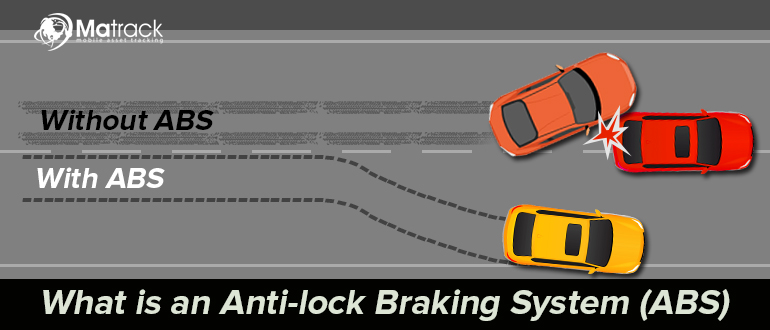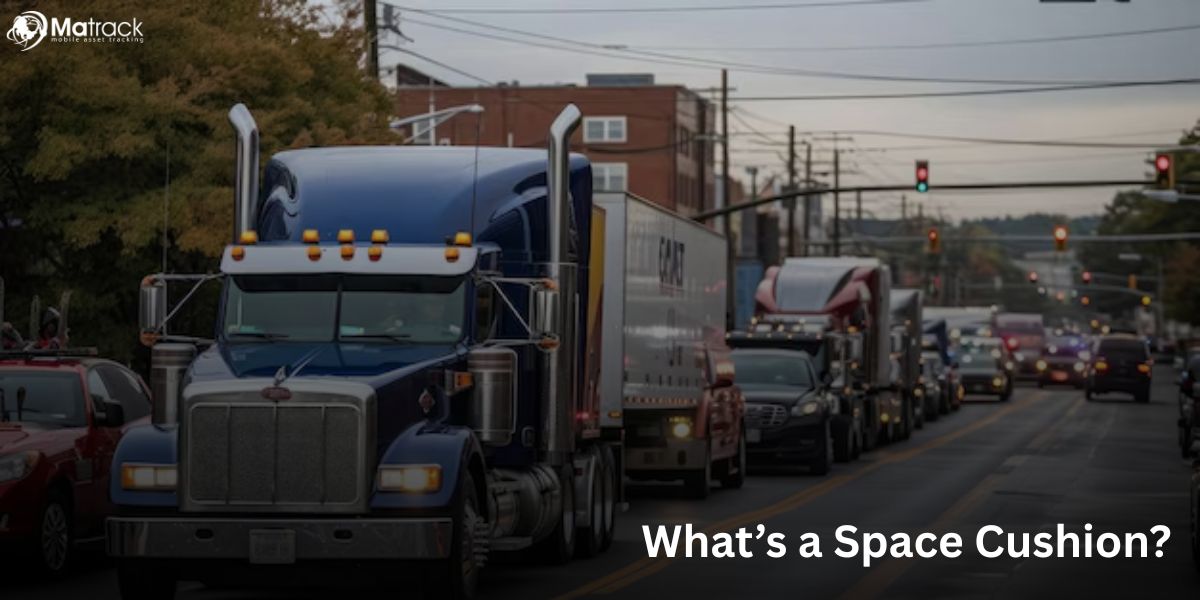Key Takeaways
- ABS stops the wheels from locking during hard braking so drivers can stay in control and avoid skidding.
- Types of ABS include four-channel, three-channel, one-channel, trailer ABS, Roll Stability Control (RSC), and Electronic Stability Control (ESC).
- ABS makes driving safer, helps stop faster, keeps vehicles stable, and is required by law for many commercial vehicles.
- ABS helps with safety, but it doesn’t replace careful driving, like not speeding or tailgating.
What is an anti-lock braking system (ABS)?
An anti-lock braking system (ABS) is a safety system in vehicles that stops the wheels from locking when you brake hard. This helps the driver stay in control and avoid skidding.
ABS keeps the wheels moving while braking, which makes steering easier. It is beneficial on wet or slippery roads.
Most modern vehicles, like cars, motorcycles, and trucks, have ABS as a standard feature. It helps make driving safer and prevents many accidents.
How Does ABS Work?

ABS prevents the wheels from locking during hard braking. It adjusts the brake pressure on each wheel to keep them moving.
Sensors monitor the speed of each wheel. When a wheel is about to stop spinning, the system reduces the brake pressure to keep it turning.
This happens very quickly, so the driver can stay in control. It allows steering while braking, which is especially helpful on slippery roads.
Types of Anti-lock Braking Systems (ABS)
Different types of anti-lock braking systems (ABS) are designed for specific vehicle needs. They all prevent wheel lock-up during hard braking but have different setups depending on the vehicle’s design.
Four-Channel, Four-Sensor ABS
Four-channel is the most advanced type of ABS. Each wheel has its own sensor and brake control, providing the best power and preventing lock-ups. It works well for commercial trucks and trailers that carry uneven loads and need precise braking.
Three-Channel, Three-Sensor ABS
Three-channel has one sensor for each front wheel and one for the rear wheels. The front wheels get better control, but the rear wheels are controlled together. It is often used in older or medium-sized trucks where precise control of the rear wheels isn’t as critical.
One-Channel, One-Sensor ABS
One-channel is the simplest form of ABS. One sensor controls both rear wheels, usually placed on the rear axle. It’s common in older vehicles and provides basic anti-lock functionality, which is still safer than no ABS.
ABS for Trailers
Trailers have special ABS to prevent sliding or jackknifing. This system can work separately or be connected to the tractor’s ABS. It is necessary to tow heavy loads safely and keep the vehicle stable.
Enhanced Stability Systems
Modern ABS works with advanced systems like Roll Stability Control (RSC) and Electronic Stability Control (ESC). RSC reduces rollovers, while ESC helps with steering around corners. These systems make vehicles safer by improving control in harsh driving conditions.
Enhancing Vehicle Safety With ABS
Without ABS
Without anti-lock brakes (ABS), sudden braking can cause the wheels to lock, especially on wet or slippery roads. Locked wheels lead to skidding, making the vehicle hard to control and increasing the risk of accidents. Semi-trailers are more likely to jackknife without ABS, which is especially dangerous in icy or wet conditions.
With ABS
With anti-lock brakes (ABS), sudden braking triggers the system to adjust brake pressure to prevent the wheels from locking. Sensors detect wheel speed and ensure the wheels keep turning, which helps maintain traction. This allows the driver to steer the vehicle and avoid obstacles while keeping control.
The Outcome
ABS prevents skidding and helps the vehicle stay stable during hard braking. It gives the driver better control in emergencies, reducing the risk of accidents and improving overall safety, especially in challenging weather or traffic conditions.
Benefits of Using ABS Technology
Shorter Stopping Distances
ABS makes it easier to stop quickly on wet or slippery roads. It keeps the vehicle’s traction, which protects cargo and prevents accidents like rear-end crashes.
Better Control and Stability
ABS helps vehicles stay balanced and steady, even when carrying heavy or uneven loads. This makes it safer for trucks to brake without losing control.
Legal Compliance
In many countries, ABS is required for commercial vehicles. Having ABS ensures the car meets safety rules and stays road-legal.
Lower Insurance Costs
Vehicles with ABS are less likely to be in accidents, which can lead to lower insurance premiums. This helps fleet operators and drivers save money while staying safe on the road.
Conclusion
ABS reduces the risk of accidents by preventing wheel lock-up during braking. Many authorities, including the US government, consider ABS essential and have made it mandatory for vehicles.
However, ABS is not a substitute for safe driving. Avoid habits like speeding, tailgating, or driving while tired to benefit from this technology fully. ABS works best when you drive cautiously and responsibly. It cannot compensate for reckless behavior on the road.
Frequently Asked Questions
Is ABS Good for all commercial vehicles?
Yes, ABS is highly effective for commercial vehicles. It helps prevent skidding and improves control during heavy braking, making it safer for large and heavy vehicles.
Can I Retrofit ABS to My Vehicle?
No, ABS cannot be retrofitted to vehicles that were not originally equipped with it. Installing ABS requires complex system integration that is only done during manufacturing.
How Can I Tell If My Vehicle Has ABS?
Check your vehicle’s owner’s manual or look for an ABS warning light on the dashboard that briefly lights up when you start the car. You can also contact the manufacturer for confirmation.



